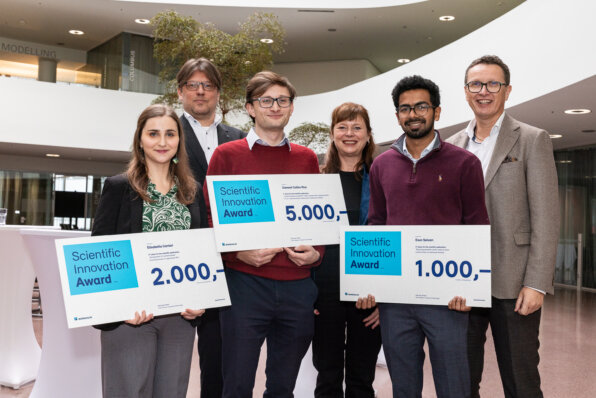Our View on the Circular Economy
Plastics’ unrivaled properties and low cost have made them the workhorse material of the modern economy. Every day, nearly everyone, everywhere, encounters plastics, particularly plastic packaging.

Background
Plastics’ use has increased twenty-fold in the past half-century and is expected to double again in the next 20 years. While plastics have many benefits, including their versatility, durability, safety and lightness, the drawbacks of the current plastics value chain are increasingly apparent. After first use, most plastic packaging ends up in landfill or is dumped, with too little being recovered. As a result, USD 80-120 billion is lost to the economy each year, representing 95% of the material value of plastic packaging. This makes today’s plastics economy purely linear. Natural resources are extracted to make products, which are used and then thrown away. Economic growth in a linear economy therefore requires ever-greater use of finite natural resources.
In addition, plastic packaging too often escapes from waste collection systems. The dumping and littering that results from this damages ecosystems such as the ocean and has significant economic costs (see our paper on Marine Litter for more on this topic).
However, an opportunity beckons: we can make materials more effective by using less of them, reusing or recycling the material we do use, and by switching to renewable feedstock rather than fossil-based raw materials. This circular economy model will be better for economic growth and the environment, while allowing society to continue to enjoy the many benefits of plastic packaging.
Our View
Plastics Are Too Valuable to Throw Away
The innovative plastics we develop address major global challenges including climate change, water and energy use, health, protecting and preserving food, and waste and recycling. Plastics are too valuable to throw away and we strongly support the transition to a circular economy for plastics.
One cornerstone of a circular economy is designing for recyclability, in which the ability to recycle a product is built into its design, helping to optimize the circulation of material for recycling and reuse. This is discussed in more detail below. Together with our value-chain partners, we are also driving change to enable more reusable and 100% recyclable packaging and replace difficult-to-recycle materials.
In addition, we advocate for the separate collection of all plastics and the best end-of life options. To support the shift towards a circular economy, we want to see collection, sorting and recycling fees that vary according to the true costs and recyclability of plastic waste. These fees would be financed by Extended Producers Responsibility schemes. After a probation period, a substantial levy should be applied to non-recycled packaging.
We Will Play an Active Role in the Transition to a Circular Economy
As a leader in the polyolefins (PO) industry, it is essential for our future success that we actively support the transition to a circular economy. Our strategy for our PO business will move us step-by-step towards a circular economy, with an initial focus on commercializing mechanical recycling and increasing its use. We are also assessing other technologies such as chemical recycling, to enable a circular economy for waste that cannot be mechanically recycled.
Active stakeholder engagement with regulatory decision makers and the entire value chain are key elements of a circular economy. To help direct the industry’s transition to a circular economy, we are active members of associations such as Plastics Europe, the Polyolefin Circular Economy Platform, CEFLEX and the Ellen MacArthur Foundation.
The Circular Economy Model Is an Opportunity for Us to Grow
The successful transition to a circular economy will present new growth opportunities for us.
We were the first PO producer to acquire recycling companies. This means that in addition to having more than 30 years’ experience in polymer science, compounding and research and development, we have over 20 years of recycling expertise. This makes us well placed to increase our recycling output and the circularity of POs.
We are also working with partners in the value chain to boost our recycling capabilities. For example, we have strategic partnerships with OMV to advance chemical recycling and with EREMA in mechanical recycling. This helps to advance our growth strategy and our strategic position in a circular economy.
To boost the impact of our circular economy activities, we have created the EverMinds™ platform. EverMinds™ is designed to bring stakeholders together to constantly innovate our technologies and product portfolio, with circularity of plastics at its core. It is a catalyst for better economic, environmental and societal outcomes and an inspiration that reminds us to always act with the lifecycle of materials in mind.
Technology is key to our ability to grow. Borcycle™, our evolving recycling technology, will transform PO-based waste streams into versatile and value-adding solutions. It combines state-of-the-art technology with our polymer and innovation heritage, giving us pioneering circular solutions for a broad range of demanding applications across industries.
The Design of Plastic Products Is Key
Plastic products must be mindfully designed, to ensure they make the most efficient use of resources over their entire life cycle, including end of life, while still performing their functions effectively. To promote this concept, we developed our 10 Codes of Conduct for Design for Recyclability, to help plastic packaging designers keep the product’s end of life in mind.
Ideally, products should be designed so that it is possible to reuse or mechanically recycle their materials. Where this is not possible, the focus should be on chemical recycling, then energy recovery. The choice of reuse, recycling or energy recovery needs to consider the impact on the environment (such as carbon dioxide emissions), the cost, suitable applications for recovered materials and market requirements. Other assessments may also be needed, such as the tendency for single use plastics to end up as waste in the environment. In addition, resource efficiency and performance should not be compromised to achieve circularity.
To ensure an unbiased and professional review of our Life Cycle Assessments and other certification processes, we work with external certification bodies.
We Need an Agreed Approach for Calculating Recycled Content
Recycled content becomes a key product attribute in a circular economy. Chain of Custody models are needed to trace recycled content and advance sustainability in the value chain in general.
Mass balance accounting is a way to trace the flow of materials through the value chain.We believe that recycled content allocated using mass balance should be treated as equivalent to directly allocated recycled content as they equally advance the circular economy. This need for allocation is market dependent and is not related to the recycling technology used.
We support the creation of a regulatory framework and widely accepted standards, which ensure that the mass balance of feedstock is supported in the same way as the segregated one. Certification should support the unified use of the mass balance approach.
Mass balance will enable the development of novel chemical recycling technologies.


